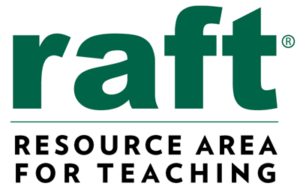Plumbing the Depths
Model the taking, recording, and interpreting of “ocean” depth measurements using a opaque foam container, a hidden ocean “floor”, and a simple tool.
Standards
Idea Sheets are cross-referenced to subjects listed in the Common Core, Next Generation Science Standards, and California Content Standards.
Mathematical Practices: 1. Make sense of problems and persevere in solving them. 2. Reason abstractly and quantitatively. 3. Construct viable arguments and critique the reasoning of others. 4. Model with mathematics. 5. Use appropriate tools strategically. 6. Attend to precision. 7. Look for and make use of structure. 8. Look for and express regularity in repeated reasoning. ||Common Core Mathematics||Grade 4||Mathematical Practices|||Mathematical Practices: 1. Make sense of problems and persevere in solving them. 2. Reason abstractly and quantitatively. 3. Construct viable arguments and critique the reasoning of others. 4. Model with mathematics. 5. Use appropriate tools strategically. 6. Attend to precision. 7. Look for and make use of structure. 8. Look for and express regularity in repeated reasoning. ||Common Core Mathematics||Grade 5||Mathematical Practices|||5.G.1. Use a pair of perpendicular number lines, called axes, to define a coordinate system, with the intersection of the lines (the origin) arranged to coincide with the 0 on each line and a given point in the plane located by using an ordered pair of numbers, called its coordinates. Understand that the first number indicates how far to travel from the origin in the direction of one axis, and the second number indicates how far to travel in the direction of the second axis, with the convention that the names of the two axes and the coordinates correspond (e.g., x-axis and x-coordinate, y-axis and y-coordinate).||Common Core Mathematics||Grade 5||Geometry||Graph Points On The Coordinate Plane To Solve Real-World And Mathematical Problems|||5.G.2. Represent real world and mathematical problems by graphing points in the first quadrant of the coordinate plane, and interpret coordinate values of points in the context of the situation.||Common Core Mathematics||Grade 5||Geometry||Graph Points On The Coordinate Plane To Solve Real-World And Mathematical Problems|||Develop & use a model to describe that waves are reflected, absorbed, or transmitted through various materials. [Both light & mechanical waves. ] ||Next Generation Science Standards||Middle School||Physical Science||Waves and their Applications in Technologies for Information Transfer |||Mathematical Practices: 1. Make sense of problems and persevere in solving them. 2. Reason abstractly and quantitatively. 3. Construct viable arguments and critique the reasoning of others. 4. Model with mathematics. 5. Use appropriate tools strategically. 6. Attend to precision. 7. Look for and make use of structure. 8. Look for and express regularity in repeated reasoning. ||Common Core Mathematics||Grade 6||Mathematical Practices|||Mathematical Practices: 1. Make sense of problems and persevere in solving them. 2. Reason abstractly and quantitatively. 3. Construct viable arguments and critique the reasoning of others. 4. Model with mathematics. 5. Use appropriate tools strategically. 6. Attend to precision. 7. Look for and make use of structure. 8. Look for and express regularity in repeated reasoning. ||Common Core Mathematics||Grade 7||Mathematical Practices|||Mathematical Practices: 1. Make sense of problems and persevere in solving them. 2. Reason abstractly and quantitatively. 3. Construct viable arguments and critique the reasoning of others. 4. Model with mathematics. 5. Use appropriate tools strategically. 6. Attend to precision. 7. Look for and make use of structure. 8. Look for and express regularity in repeated reasoning. ||Common Core Mathematics||Grade 8||Mathematical Practices
2.2 Understand that the length of a horizontal line segment equals the difference of the x-coordinates.||CA Mathematics||Grade 4||03. Measurement and Geometry||2.0 Students use two-dimensional coordinate grids to represent points and graph lines and simple figures.|||2.3 Understand that the length of a vertical line segment equals the difference of the y-coordinates.||CA Mathematics||Grade 4||03. Measurement and Geometry||2.0 Students use two-dimensional coordinate grids to represent points and graph lines and simple figures.|||6. Scientific progress is made by asking meaningful questions & conducting careful investigations. As a basis for understanding this concept, and to address the content of the other strands, students will develop questions & perform investigations.||CA Science||Grade 4||04. Investigation and Experimentation|||6. Scientific progress is made by asking meaningful questions and conducting careful investigations. As a basis for understanding this concept and addressing the content in the other three strands, students should develop their own questions and perform investigations. Student will:||CA Science||Grade 5||04. Investigation and Experimentation|||7. Scientific progress is made by asking meaningful questions and conducting careful investigations. As a basis for understanding this concept and addressing the content in the other three strands, students should develop their own questions and perform investigations. Students will: ||CA Science||Grade 6||07. Investigation and Experimentation|||7. Scientific progress is made by asking meaningful questions & conducting careful investigations. As a basis for understanding this concept, and to address the content of the other strands, students will develop questions & perform investigations.||CA Science||Grade 7||07. Investigation and Experimentation|||7.d. Construct scale models, maps and appropriately labeled diagrams to communicate scientific knowledge (e.g., motion of Earth’s plates and cell structure).||CA Science||Grade 7||07. Investigation and Experimentation||7. Scientific progress is made by asking meaningful questions & conducting careful investigations. As a basis for understanding this concept, and to address the content of the other strands, students will develop questions & perform investigations.|||9. Investigation and Experimentation||CA Science||Grade 8||01. Physical Sciences|||1. Scientific progress is made by asking meaningful questions & conducting careful investigations. As a basis for understanding this concept, & to address the content of the other strands, students should develop questions & perform investigations.||CA Science||Grade 9-12||05. Investigation and Experimentation
- Pre-K
- Grades K-2
- Grades 3-5
- Math
